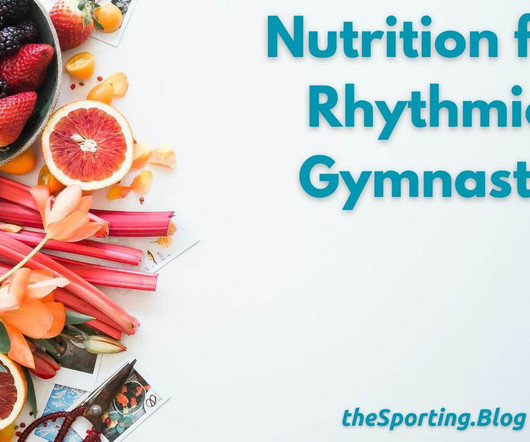A Guide to Nutrition For Rhythmic Gymnasts
The Sporting
FEBRUARY 27, 2023
Everything You Need to Know About Nutrition for Rhythmic Gymnastics Rhythmic gymnastics is a sport that gives special consideration to body image. International rhythmic gymnast Neringa Masionyté explains everything you need to know about diet and nutrition for gymnasts. A young rhythmic gymnast in action!



















Let's personalize your content